The “indestructible” plant I can’t keep alive
A winter umbrella tree project. Let’s see if this one survives!
When I was growing up, I used to wake up early and make paper chains. I snuck into the living room, put cartoons on low volume, and started cutting colored construction paper into strips. I was industrious. I taped hundreds of links together in a morning, then dragged the chain around the apartment, reveling in its heft. My mom threw out the chains once I lost interest, but she kept the cabinet stocked with paper for more.
As I got older, I moved on to Gundam model kits. My friend Chris and I picked them out at Chinatown shops that our moms took us to, usually after dim sum. I woke up the next day itching to snap the model’s parts out of their plastic sheets. The models had articulated ball joints, but were too delicate for real play. The joy was in the making.
This past Saturday, I woke up with a familiar itch. I wanted to get my hands on something and turn it into something else. So I visited the neighborhood plant shop.
Heptapleurum arboricola, my old nemesis, we meet again. Formerly classified under the genus schefflera, the dwarf umbrella tree is a corky shrub native to Taiwan and China that’s become ubiquitous in the houseplant trade. Plant people love it because it tolerates low light and lots of abuse. In theory. I’ve killed four so far, and I have no idea why. Yet I’m determined. Even though some bonsai traditionalists don’t count the species as “real bonsai,” it’s a popular choice for indoor growers. The umbrella tree’s aerial roots and firework-burst foliage can be shaped into impressive banyan styles, and I’d like to add one to my collection.
A trio of umbrella tree stumps cost me $20. The trunks had decent thickness and nice aerial roots, and I could see the beginnings of a design in the pot. I could also see dozens of fungus gnats crawling out of moldy soil. An infestation this bad could mean the plant is already a goner. Since I haven’t had much luck with umbrella trees, I’m not too concerned about whether this project survives. The point is to make something; to have what philosophers call an embodied experience.
Still, I didn’t want to risk contaminating my other plants, so I worked the roots out on my fire escape.
Half of the internet advice on umbrella trees warns me to keep the roots consistently moist. The other half assures me that the roots will rot if I don’t let the soil dry out between waterings. I don’t know who to believe, and you shouldn’t listen to me anyway, because I can’t keep this allegedly indestructible species alive.
I worked powdery soil out with my fingers and sprayed the roots with hydrogen peroxide to kill any lurking gnat eggs. Then I took the plants inside and rinsed them bare. Once they looked squeaky clean, I trimmed the roots down to this.
Fingers crossed, this should take care of the fungus gnats. I haven’t seen any crawling out in the week since, so I think I got them all.
Bonsai artists like Nigel Saunders, my umbrella tree rabbi, will defoliate a tree like this when doing heavy root work. Removing all the leaves reduces water demand on the roots, which is helpful since most of the root mass now lies in the compost bin. Defoliation also helps you see the underlying structure of the branches. I didn’t know how to fit these pieces together until I removed the leaves. Once I did, they snapped into place like my Gundam kits.
I’ll admit I’m proud of this one. I think the clump style planting looks naturalistic while conveying a bonsai-like sense of movement. The aerial roots help connect the trunks into a single mass and there are plenty of branches to choose from once the trees start growing again.
If, I should say. This could easily become my latest umbrella tree casualty. I’ve planted the bonsai in pure coarse pumice, which should promote root growth. I’m keeping it wrapped in a plastic bag to boost the humidity and ease the plants into recovery. Maybe I’ll even get some more aerial roots.
Sometimes you have to create something that likely won’t stick around. If we only made things that we kept close at hand, we’d become hoarders. Instead, I’m encouraged to know that our need to create outweighs our need to possess. Sounds like we could take that idea and do some good with it.
Tree reading
Seedlings and cuttings from the felled 200-year-old Sycamore Gap tree have taken root, so this historic tree can live on! [BBC]
A possum hiding in a fake Christmas tree. Some people have all the luck. [Tiktok]

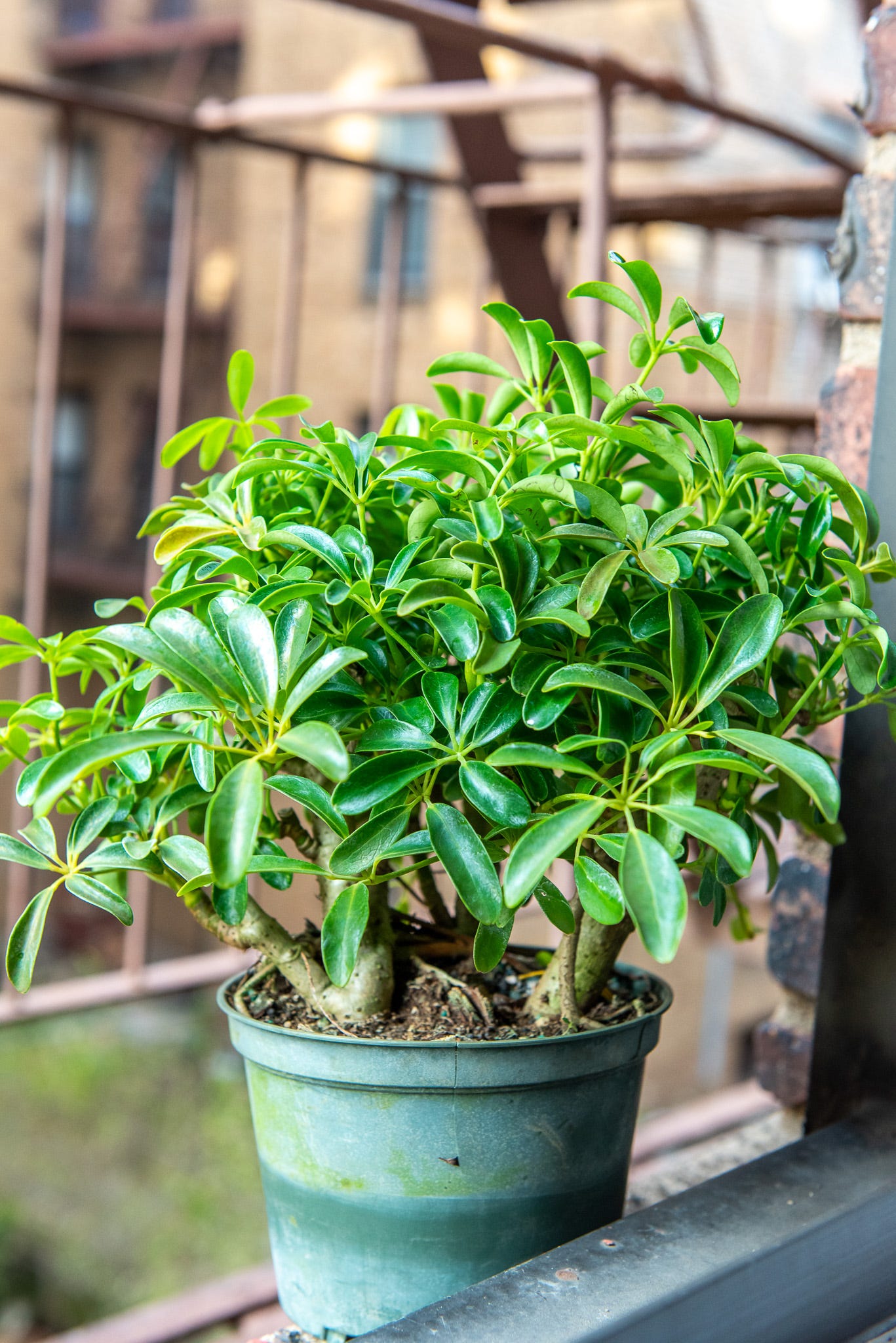

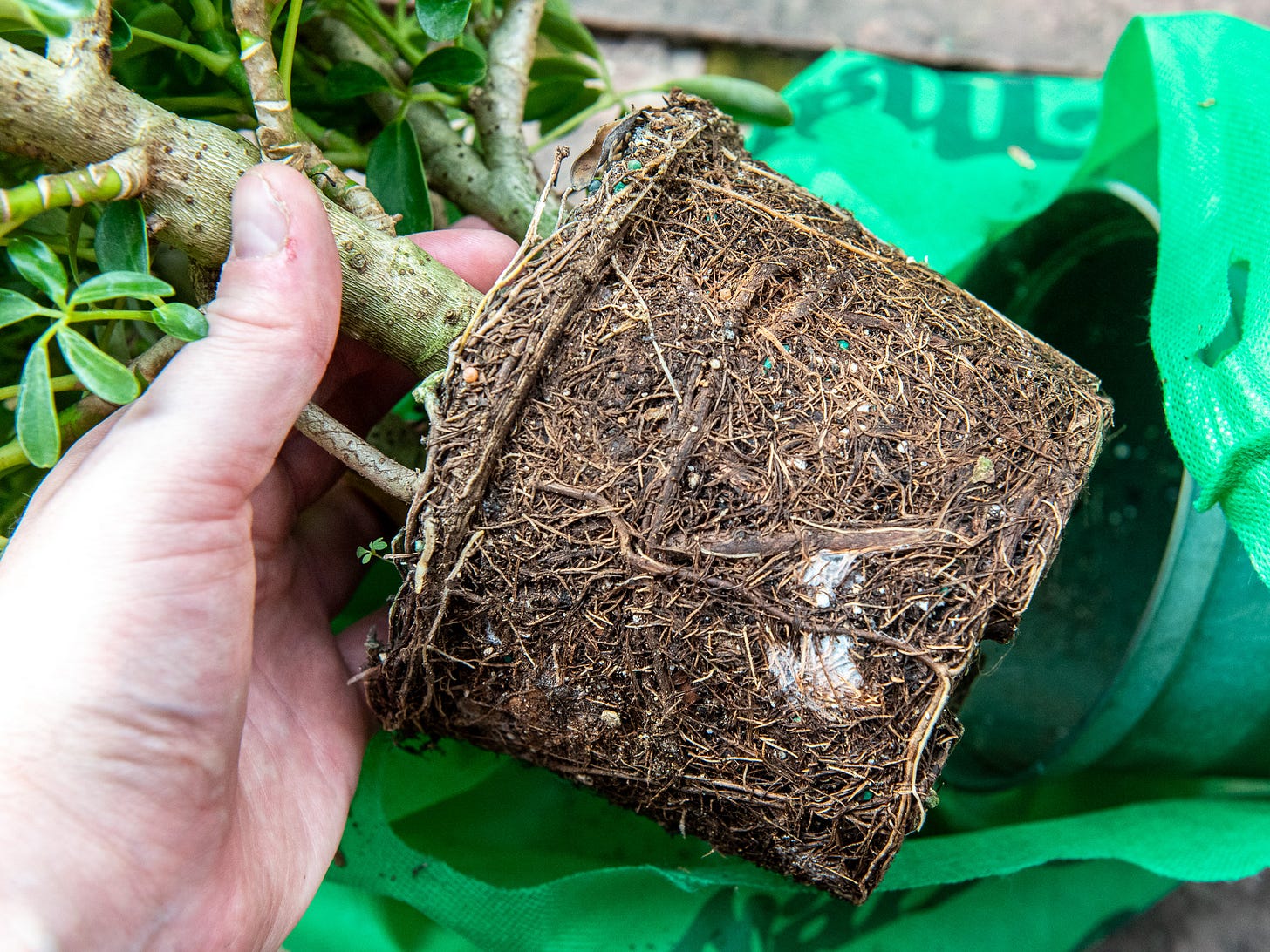

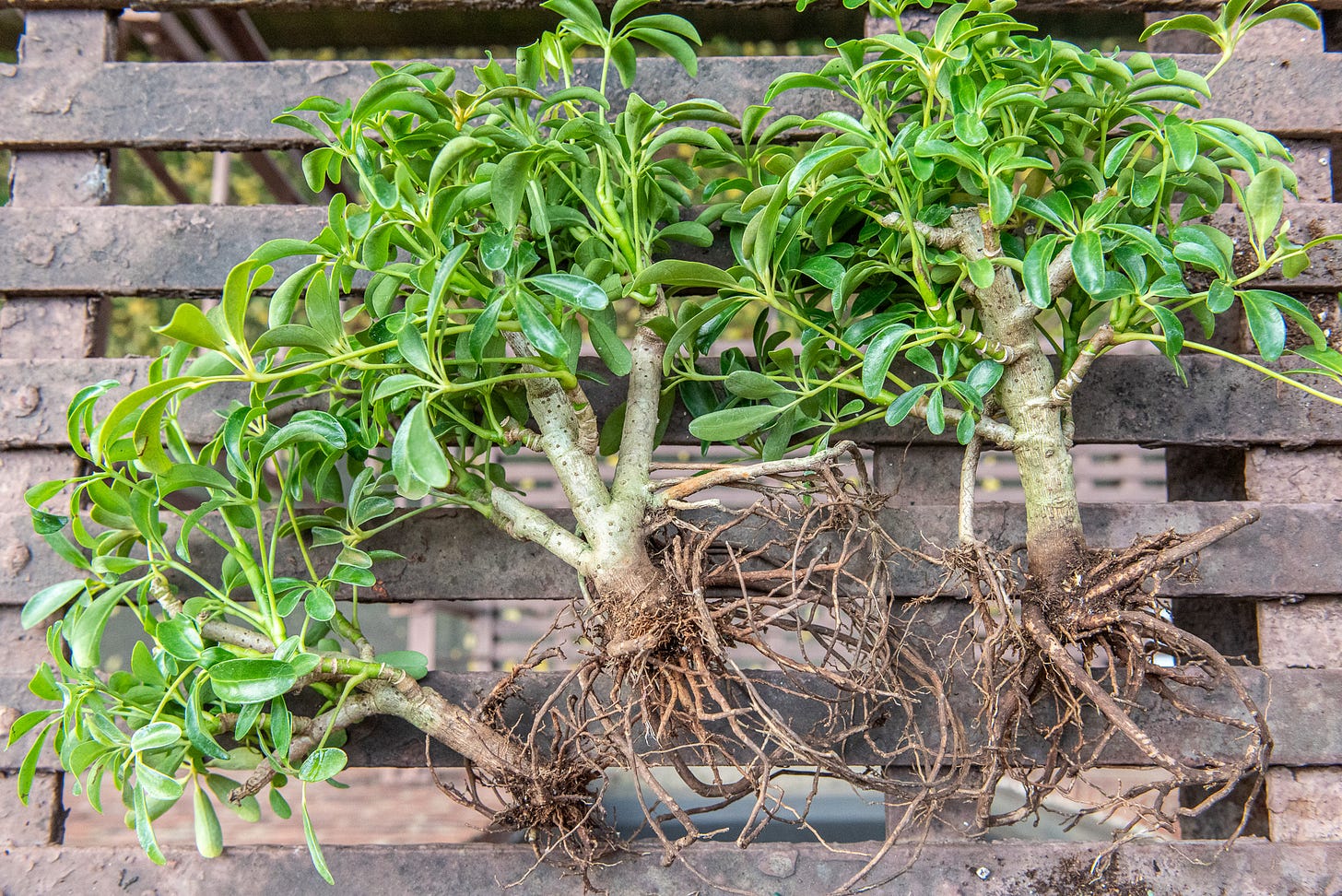
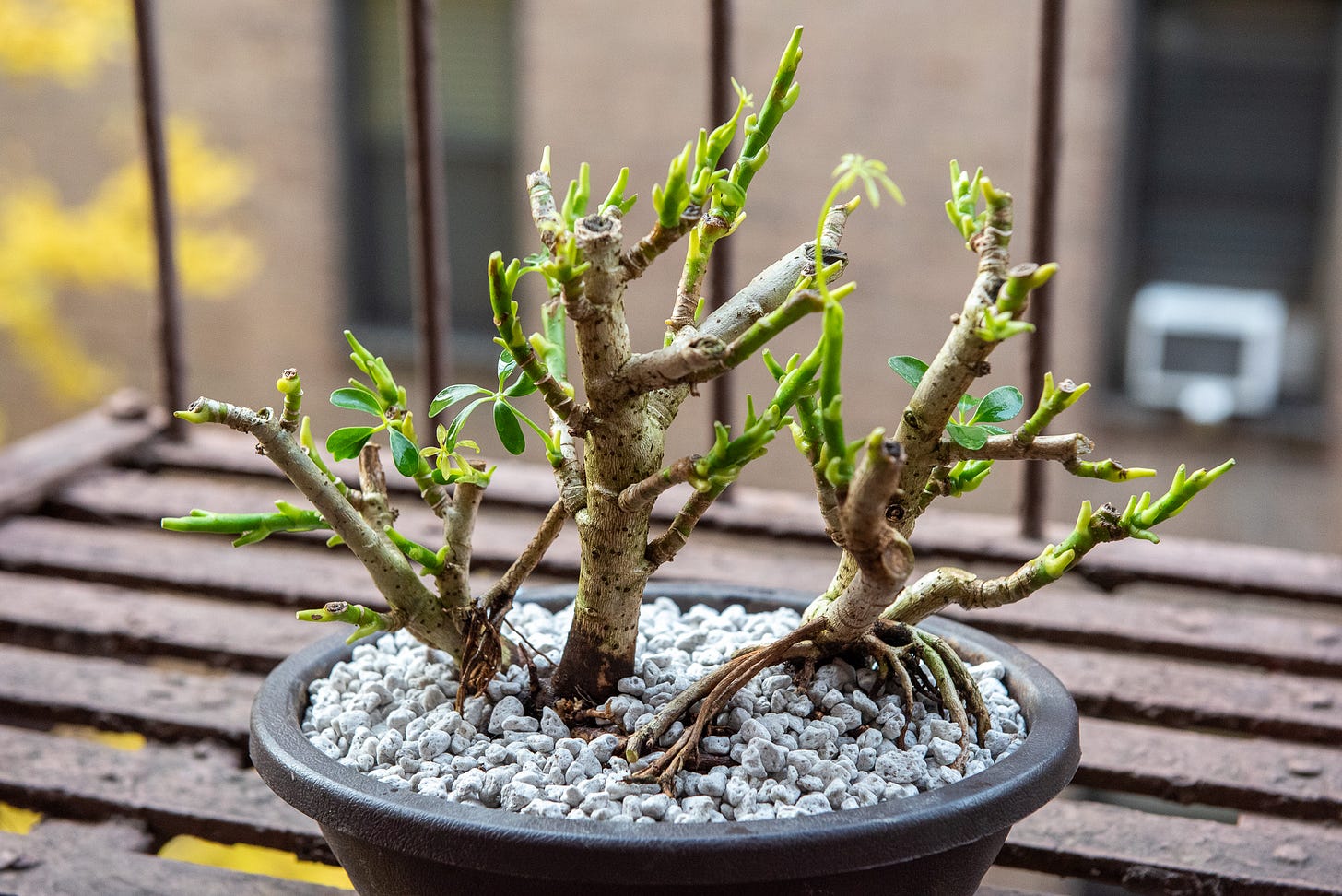
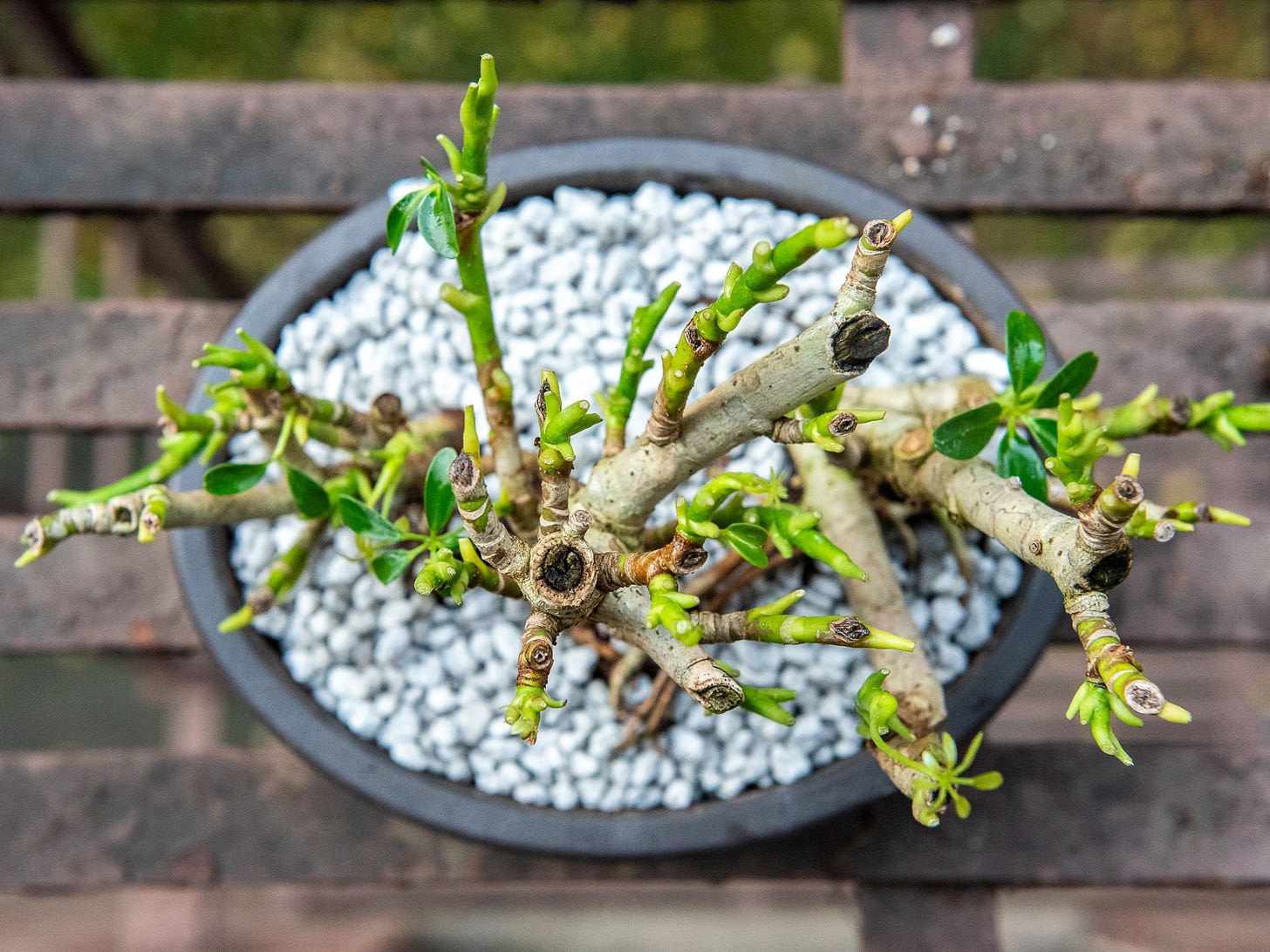
Is this still alive?